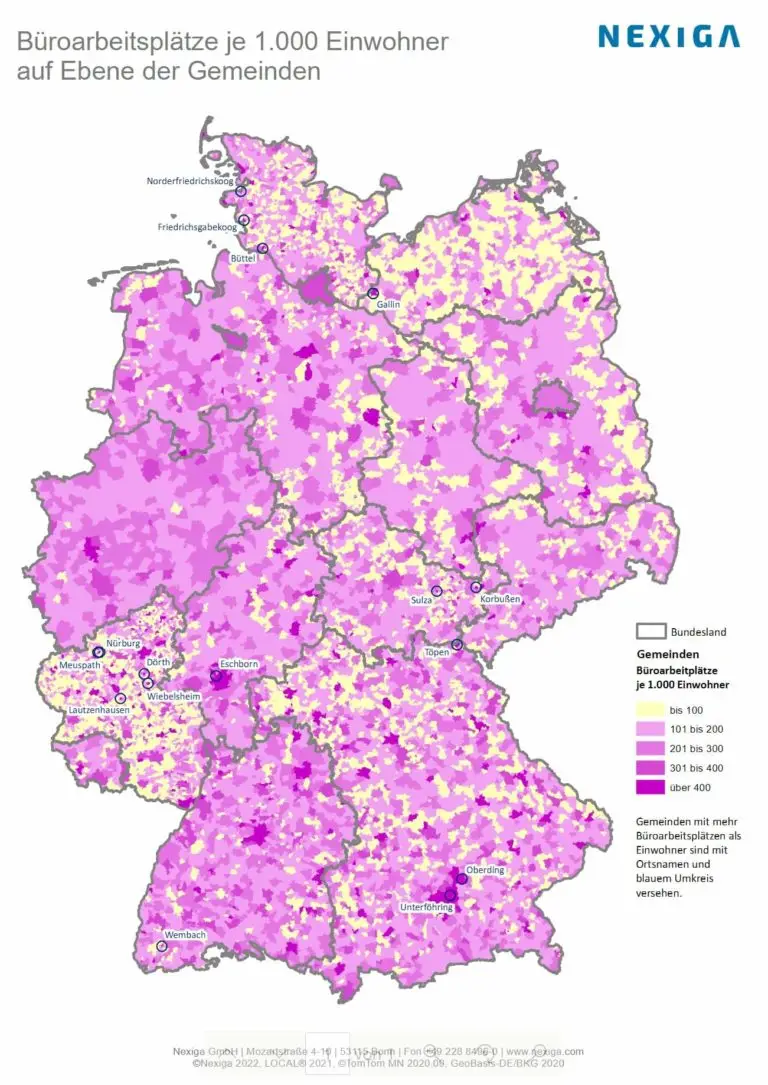At Nexiga, it's like many companies. Gradually, employees are returning to the office. With the expiry of the Corona restrictions and the home office obligation, some of the work is taking place on site in the office again. Initially only for a few days, but depending on how the pandemic progresses, more may return.
Many companies are doing it this way. But one thing is certain: things will never be the same again as they were before Corona. The rapid digital adaptation has changed the entire office routine, and the home office has proven its worth. Employee satisfaction is high, and productivity has suffered much less than feared. In many companies, company agreements on hybrid working have now been concluded, allowing workforces to continue to take advantage of home office opportunities. According to labor researchers and real estate experts, work will be more flexible, less expensive and more mobile in the future.
The future of office real estate is uncertain in times of increased home office use. Some industries are reducing office space, while others need more space. Mixed forms of home office and office are likely to become established. In the office of the future, workplaces will no longer be person-based, but task-based.
Prof. Dr. Thomas Beyerle, Head of Research at the Catella Group, says: "There will be a new geography in the office property market. Employees will no longer use the premises eight hours a day from Monday to Friday. Rather, individual employees will rotate weekdays.Less space will be needed in certain locations in the future. Companies will prefer to choose a smaller space in a prime location at a higher rent than a dubious location. Therefore, the future is to relocate space to central, quickly accessible locations (also important for site planning). More workers alternating on less but higher quality space - at a higher rent. Accordingly, the structural demand for prime properties will continue.
Right at the top are the smallest municipalities, which actually have more office jobs than inhabitants. They are Lautzenhausen (at Frankfurt/Hahn Airport) and Nürburg in the Eifel (at the Nürburgring). Töpen near Hof (home of the Denn's Biomärkte company) also stands out.
In the small village of Töpen, the organic trading company Dennree was founded in 1975 in the immediate vicinity of the former border to the GDR. Today, it dominates the village with its administration and central warehouse. Nexiga lists 1,018 inhabitants in the small Municipality , but 1,899 office jobs. The vast majority of these are probably at Denn's. The employer is of great importance to the region. The catchment area of the employees includes not only Upper Franconia in Bavaria, but also the south of Thuringia, the southwest of Saxony. The Czech Republic is also not far away.
Number of office jobs on the rise
The latest Nexiga figures show that the number of office jobs is still rising. The figure reported is 20.1 million office jobs, 5.2% more than in the pre-Corona period of 2018. This fits in with the fact that the city of Bonn, for example, reports just over 4 million square meters of office space for 2021, 2.2% more than in 2020. And this with a very low vacancy rate of only 2.1%.
Where the highest office densities are compared to the number of inhabitants is shown in the Nexiga map.
High office densities with more than 400 office workplaces per 1,000 inhabitants are found above all in the well-known financial and administrative centers of Frankfurt, Düsseldorf, Munich, Stuttgart, etc. But many smaller communities are also dominated by offices. These include Schweinfurt or Sindelfingen, for example, or university cities such as Ulm, Passau or Regensburg.


